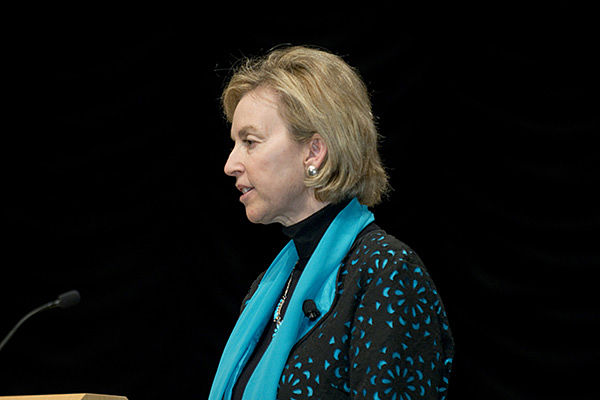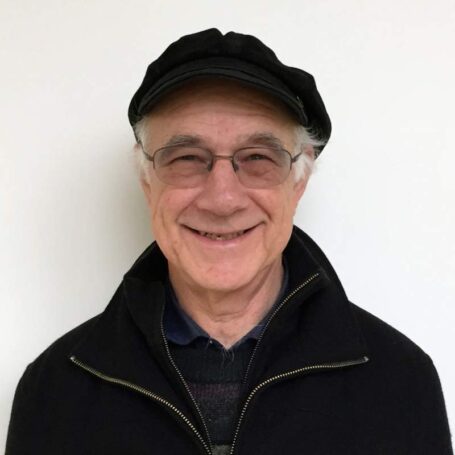 Impact
Impact Indigenous Education’s Checkered History in the U.S.
The takings conducted by the United States against the indigenous people who resides on those lands before their “discovery” by Europeans are usually reckoned in acres, not voices. But as Teresa McCarty in the 12th annual Brown Lecture in Education Research detailed, that is exactly what the indigenous did lose when they entered the sphere of public education.
McCarty, a professor of education and anthropology at the University of California, Los Angeles and professor emerita at Arizona State University, has studied indigenous education for the last 35 years. Her talk on Thursday looked at the long and often sad picture of Indian education starting decades before the 1954 Brown vs. Topeka Board of Education U.S. Supreme Court decision that gives the Brown lecture series its name.
Indigenous education in the U.S. parallels other efforts to educate ‘the Other,’ she noted, although it diverges at various junctures. It illustrates “the enduring coloniality of indigenous struggles for equality and justice, even as it illuminates the ways in which indigenous struggles have intertwined with those of Asian-Americans, African-Americans, Mexican-Americans and others.”
McCarty opened her talk with a description of the Hampton Normal and Agricultural Institute, an industrial training and teacher preparatory school for African-Americans in Hampton, Virginia (which originally, she noted was the Algonquian community of Kecoughtan). The institute was founded in 1868 by the son of white missionaries to educate African-Americans. Seven years later some 17 native American young men were transferred to Hampton, young men who had been captured after the so-called Red River Indian War wound down in northern Texas. Those 17 were the first installment of what ultimately would be 1,400 indigenous students from 65 indigenous nations. “Central to Hampton’s Indian program and the boarding school system, in general,” McCarty said, “was what [she and K. Tsianina Lomawaima] have called ‘erase and replace.’ Erase Native languages, replace with English. Erase native religions, replace with Christianity. And so on.
“The idea was that English transmitted a superior culture. English teaching was a hammer of domination and control.”
Whether it succeeded at that or not, Hampton failed its Indian charges in other ways. Only one in 60 of its indigenous students graduated. Ironically, its alumni often reported losing jobs they gained after leaving Hampton when their employers learned they had attended a ”black school.’ In fact, “Hampton’s Native American program closed in 1923, after Congress failed to re-appropriate its funding on the grounds that the school encouraged racial mingling.”
So starts McCarty’s address in “three movements.” The first movement describes two 1953 laws, House Concurrent Resolution 108 and Public Law 280 (known by the ominous nickname of the ‘Indian termination policy’) which, among other things ordered compulsory English-only schooling for the roughly 100,000 native students in public, federal and parochial schools. “Thus,” said McCarthy, “as Chief Justice Earl Warren proclaimed the court’s unanimous opinion that the separate but equal doctrine has no place in public education, the colonial project to forcibly separate and assimilate native peoples continued unabated.”
The second movement examines the rise of what might be called ‘alternative’ education for some indigenous Americans, schools in which the students were taught in the culturally indigenous languages first, and only later in English. “Indigenous educators well understood that the radical pedagogy upon which they embarked teaching native children to read in their mother tongue first, though a practice unquestioned for children from dominant language backgrounds would be subject to intense government surveillance.” To defend their radical – using the idea of the literal root word radix — notions, these educations collected reams of data which revealed better outcomes for the students in the classes.
The third movement reflects a statement by the late Richard Ruiz, to whom McCarty had dedicated her lecture. (Ruiz and Felice Levine, the executive director of the American Educational Research Association, conceived the Brown lecture series. He was also McCarty’s colleague at the University of Arizona and had hired her “in my very first baby assistant professor position.) “To deny people their language, Richard maintained, as in colonial schooling, is to be sure to deny them voice. But to allow them their language is not necessarily to allow them voice.”
And so the third movement is the integration of indigenous culture into the classroom, even when – or perhaps in spite of – the mania for standardized testing and standardized results flowing from No Child Left Behind.
“Educators and parents in these schools understand that sameness, uniformity of approach does not equate with fairness,” McCarty said. “So, for example, having equal access to a Common Core, whose Common Core, whose languages, knowledge and voices are included? And which knowledge, languages and community futures are placed at risk?”
To view the entire Brown lecture, click here for a video and transcript of the event.




























































































